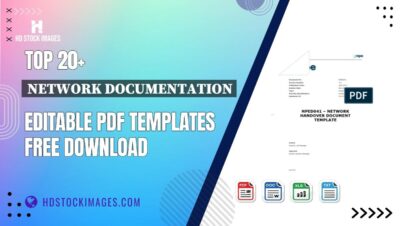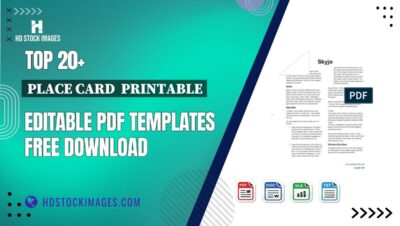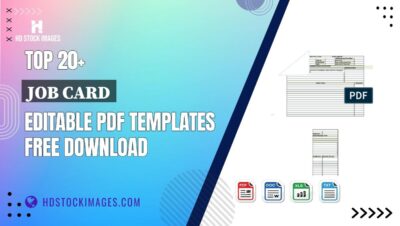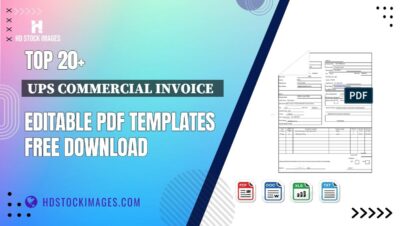Are you on the hunt for typing or data entry jobs? You're not alone! LinkedIn is a treasure trove of opportunities, but navigating through the job postings can sometimes feel overwhelming. In this post, we'll explore how many typing jobs are currently available on LinkedIn and provide you with tips on finding the best data entry positions that suit your skills and preferences.
Understanding the Typing Job Market on LinkedIn

LinkedIn has revolutionized the way we search for jobs, especially in fields like typing and data entry. As of now, there are thousands of typing job postings available, ranging from freelance gigs to full-time roles. But how can you effectively sift through these listings to find what you're looking for? Let's break it down.
1. Job Categories
Typing jobs on LinkedIn can be categorized into various types:
- Freelance Typing: These positions often allow you to set your own hours and work from anywhere.
- Full-Time Data Entry: Traditional jobs that require you to work a set schedule within an office or remotely.
- Part-Time Roles: Perfect for those balancing other commitments while still looking to earn an income.
- Specialized Positions: Jobs that may require specific skills, such as medical or legal transcription.
2. Current Trends
The demand for typing and data entry skills has been on the rise, particularly in sectors such as:
- Healthcare: With the growing number of telehealth services, there's a need for accurate data entry in patient records.
- Finance: Financial institutions often require data entry specialists to manage vast amounts of data efficiently.
- Technology: Software companies frequently seek typing professionals for testing and documentation purposes.
3. How to Search Effectively
Here are some tips to help you find the best typing and data entry jobs on LinkedIn:
- Use Specific Keywords: Instead of searching for just "typing jobs," try phrases like "remote data entry" or "freelance transcription." This will help you narrow down the listings.
- Set Job Alerts: LinkedIn allows you to set alerts based on your search criteria, so you can be notified of new postings immediately.
- Join Relevant Groups: There are numerous LinkedIn groups dedicated to job seekers in data entry and typing; joining these can connect you with job leads and resources.
In summary, the typing job market on LinkedIn is vibrant and full of opportunities. With a strategic approach to your search, you can find positions that not only match your skills but also align with your career goals. So, stay proactive, keep your resume updated, and get ready to explore the vast world of typing jobs!
Also Read This: How to Avoid Extra Spaces When Copying from LinkedIn to Your Clipboard
3. How to Search for Typing Jobs on LinkedIn
Searching for typing jobs on LinkedIn can feel overwhelming, especially with the vast amount of listings available. But don’t worry! I’ll guide you through the process step-by-step, making it as smooth as possible.
First off, start by logging into your LinkedIn account. Once you’re in, look for the search bar at the top of the page. Here’s how to effectively use it:
- Keywords Matter: Enter specific keywords like "data entry," "typing," or "transcription." If you're interested in remote opportunities, add "remote" to your search.
- Filters Are Your Friends: After hitting enter, you’ll see filters on the left side. You can filter jobs by location, company, experience level, and even date posted. Use these to narrow down results to find the perfect match!
- Saved Searches: If you find a search that yields good results, save it! This feature allows you to receive notifications for new job postings that fit your criteria.
Another great tactic is to join LinkedIn groups focused on typing or data entry jobs. These groups often share job leads and valuable insights from industry professionals. Networking with members could lead to job recommendations, too!
Once you find a job that catches your eye, don’t rush. Take the time to read the job description thoroughly. Look for details about the job responsibilities, required skills, and company culture. This information is crucial for tailoring your application and making a great impression.
Lastly, remember to apply promptly! Many companies conduct interviews on a rolling basis, so the sooner you apply, the better your chances of standing out. Happy job hunting!
Also Read This: How to Determine If Your LinkedIn Messages Have Been Read
4. Tips for Crafting an Effective LinkedIn Profile for Typing Jobs
Your LinkedIn profile is often the first impression potential employers have of you, so it’s essential to make it shine! Here are some tailored tips to craft a profile that grabs attention for typing jobs:
- Professional Photo: Use a clear, professional-looking photo where you appear approachable and friendly. This helps build trust with employers.
- Compelling Headline: Instead of just stating your job title, consider highlighting your skills. For example, “Detail-Oriented Data Entry Specialist | Fast Typist | Transcription Expert” tells employers exactly what you excel at.
- Summary Section: This is your chance to tell your story! In a few short paragraphs, explain your experience in typing jobs, your passion for accuracy, and any special skills like familiarity with specific software (e.g., Microsoft Excel or Google Sheets).
| Section | What to Include |
|---|---|
| Experience | List relevant jobs, including internships and freelance work. Focus on achievements, such as "Increased typing speed by 20% through efficient practices." |
| Skills | Add skills like "Data Entry," "Typing Speed," and "Attention to Detail." Ask for endorsements from colleagues to boost your credibility! |
| Recommendations | Request recommendations from past employers or clients who can vouch for your typing skills and work ethic. These testimonials can be persuasive. |
Finally, stay active! Regularly engage with content related to typing and administrative jobs. Share articles, comment on posts, and connect with industry peers. This not only keeps your profile fresh but also expands your network, increasing your chances of landing that typing job!
Also Read This: How to Find Saved Posts on LinkedIn for Quick Reference
5. Exploring Different Types of Data Entry Jobs Available
When it comes to data entry jobs, the landscape is quite diverse, offering various roles that cater to different skill sets and preferences. Let's explore some popular types of data entry positions you might encounter on LinkedIn or job boards.
1. Basic Data Entry Clerk
This is the most straightforward type of data entry job. As a basic data entry clerk, your primary responsibility is to input information into databases or spreadsheets. Tasks can include:
- Transcribing handwritten documents
- Updating customer records
- Entering sales data
You don’t need extensive experience for these roles, making them great for newcomers!
2. Data Analyst
For those who enjoy working with numbers and trends, data analyst positions might be appealing. In this role, you’re not just entering data; you’re also interpreting it. Responsibilities can include:
- Analyzing datasets to extract insights
- Creating reports for management
- Using software like Excel or Tableau
This role typically requires more technical skills and can lead to higher-paying opportunities.
3. Medical Data Entry Specialist
If you have a background in healthcare, consider a position as a medical data entry specialist. This job often involves:
- Entering patient information into electronic health records (EHR)
- Updating medical billing and coding data
- Ensuring compliance with health regulations
Attention to detail is critical in this field, given the sensitive nature of the data.
4. Remote Data Entry Jobs
With the rise of remote work, many companies are offering data entry jobs that can be done from home. These roles often provide flexibility, allowing you to set your own hours. When searching for remote positions, look for keywords like "remote," "work from home," or "telecommute" in your job search.
5. Freelance Data Entry
For those who prefer a gig-based approach, freelance data entry can be lucrative. Platforms like Upwork and Fiverr are popular for finding short-term projects. You can choose jobs that align with your skills and schedule, making this a great option for hustlers looking to earn extra cash!
Each of these job types has its unique requirements and advantages, so think about what aligns with your skills and career goals. Whether you're just starting out or looking to pivot your career, there's a data entry job out there for you!
Also Read This: How to Find Pending Connections on LinkedIn and Manage Your Invitations
6. Analyzing the Number of Typing Job Postings
Now, let's dive into the numbers! Analyzing the current landscape of typing job postings on LinkedIn can give us valuable insights into job availability, trends, and potential demand in the market.
According to recent data, typing jobs on LinkedIn have experienced fluctuations, influenced by factors such as economic conditions and the growing trend of remote work. Here are some key points to consider:
1. Growth in Remote Typing Jobs
With more companies embracing remote work, the availability of typing jobs has surged. A search on LinkedIn can reveal a significant number of listings under categories like:
- Data entry
- Transcription
- Content writing
This growth indicates a shift towards flexible work arrangements, appealing to those who prefer to work from home.
2. Seasonal Trends
Typing job postings often show seasonal trends. For example, there tends to be an uptick in postings during the first quarter of the year as companies prepare for new projects. Conversely, summer might see a decrease in postings as many companies slow down during vacation months.
3. Geographic Variations
The number of typing jobs can also vary by region. Urban areas typically have higher postings due to a concentration of businesses. A quick search for typing jobs in major cities like New York or San Francisco might yield hundreds of results, whereas rural areas may have fewer opportunities.
4. Skills and Requirements
Most typing job postings specify certain skills, such as proficiency in typing speed (usually 40-60 words per minute), familiarity with software like Microsoft Office, and attention to detail. Analyzing these requirements can help you tailor your resume to meet employer expectations.
In summary, keeping an eye on the number of typing job postings can inform your job search strategy. By understanding market trends and requirements, you can position yourself as a competitive candidate in this evolving job landscape!
Also Read This: Should You Verify Your LinkedIn Profile? Why It Matters for Professionals
7. Best Practices for Applying to Typing and Data Entry Jobs
When it comes to landing a typing or data entry job, the application process can feel daunting. However, with the right approach, you can significantly improve your chances of success. Here are some best practices to keep in mind:
- Tailor Your Resume: Customize your resume for each job application. Highlight relevant skills like typing speed, accuracy, and familiarity with data entry software. Use keywords from the job description to make your resume stand out.
- Write a Compelling Cover Letter: Your cover letter is your chance to showcase your personality and enthusiasm. Mention specific experiences that relate to the job. For instance, "In my previous role at XYZ Company, I achieved a typing speed of 75 WPM with 98% accuracy."
- Showcase Your Skills: Consider including a section in your resume dedicated to your typing and data entry skills. List software programs you are proficient in, like Microsoft Excel or Google Sheets, and any certifications you may have.
- Follow-Up: After submitting your application, don’t be shy about reaching out to the employer. A polite follow-up email can demonstrate your interest in the position and keep you top of mind.
- Prepare for Tests: Many employers require applicants to take typing tests or data entry assessments. Practice ahead of time using online resources to increase your comfort and speed.
- Network: Leverage your LinkedIn connections. Reach out to friends or acquaintances already in the industry for potential job leads. Engaging in professional groups on LinkedIn can also open doors to unadvertised opportunities.
- Stay Organized: Keep a spreadsheet of the jobs you’ve applied for, noting the date, position, company, and any follow-up actions required. This organization can prevent you from missing out on opportunities.
By following these best practices, you can present yourself as a strong candidate for typing and data entry jobs. Remember, persistence is key, and every application is a step closer to your desired role!
8. Conclusion: Maximizing Your Job Search on LinkedIn
In conclusion, using LinkedIn effectively can greatly enhance your job search for typing and data entry positions. Here are some tips to ensure you’re getting the most out of your LinkedIn experience:
- Optimize Your Profile: Make sure your profile is complete and professional. Use a clear photo, write a compelling headline, and summarize your skills and experiences clearly. A well-crafted profile can attract recruiters searching for candidates.
- Engage with Content: Share relevant articles, comment on posts, and participate in discussions. This not only builds your visibility but also shows that you're engaged in your field.
- Join Relevant Groups: Look for groups focused on typing and data entry jobs. Participating in these groups can provide insights into the job market and connect you with potential employers.
- Utilize Job Alerts: Set up job alerts for typing and data entry roles. This feature will notify you of new postings, allowing you to apply quickly.
By applying these strategies, you’ll position yourself in the best possible way to find the typing and data entry jobs that suit your skills and aspirations. Don’t forget to keep your spirits high and stay proactive—your next opportunity could be just a click away!
 admin
admin








